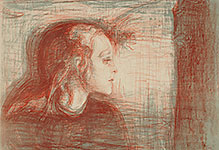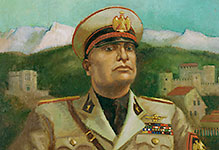
Portraits
Politicians and Statesmen, Painters' Portraits and Self-Portraits, Scientists, Rulers, Emperors and Kings, Musicians and Composers, Writers and Poets.

#30010822
0310000124 Portrait dish, (Dutch?), c1583. Portrait of a woman in Elizabethan d...

#30010841
Cast bronze medal of Pietro Aretino, Venice, around 1542. The self-styled "scou...

#30010842
Silver tetradrachm of Mithridates I., Parthian, from Iran, 171-138 BCE. It is no...

#30010844
Silver denarius of Cleopatra VII and Mark Anthony. Portrait of Cleopatra, compan...

#30010845
Gold aureus with facing portrait of Postumus (260-269), who led a revolt against...

#30010846
Gold medallion showing Constantine the Great (306-337) striking enemies. Consta...

#30010847
Bronze follis of Theodohad, Ostrogothic king. Minted in Rome, 534-36. Following...

#30010848
Gold solidus of Theodebert I, minted in the kingdom of Metz, eastern France. Fr...

#30010849
Gold solidus of Justinian I.,minted at Constantinople, 527-565. Justinian's gene...

#30010850
Gold solidus of Empress Irene (797-802). She was the first woman to rule in her...

#30010851
Gold solidus of Charlemagne, Frankish, (762 - 814). Minted in Dorestad, Netherla...

#30010852
Gold hyperperon of Emperor Manuel Komnenos, Byzantine (1143-80). The distinctive...
